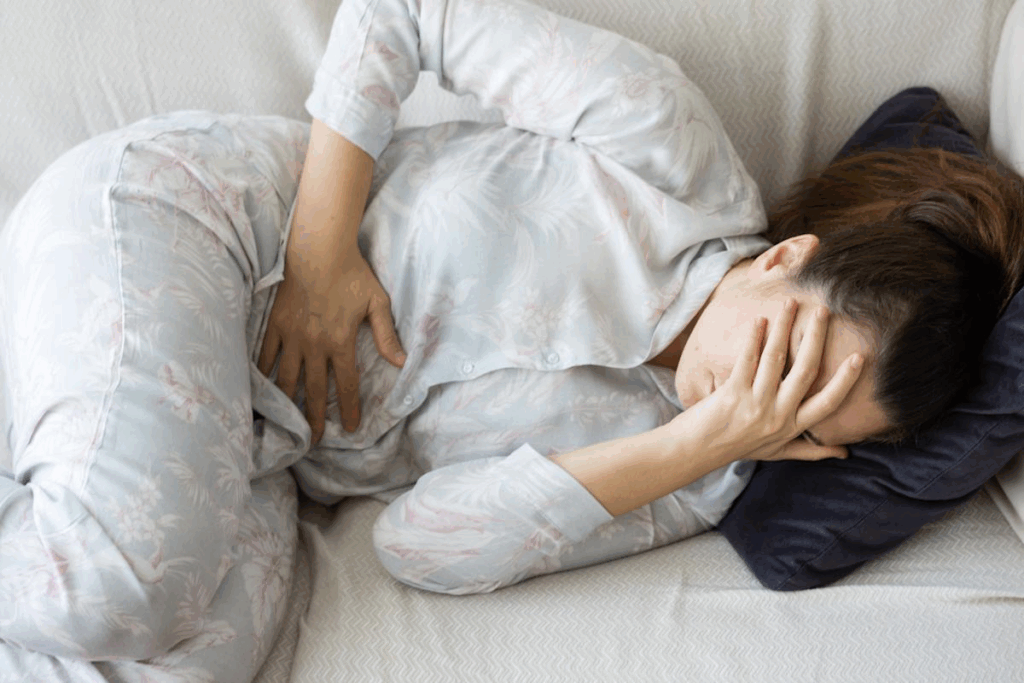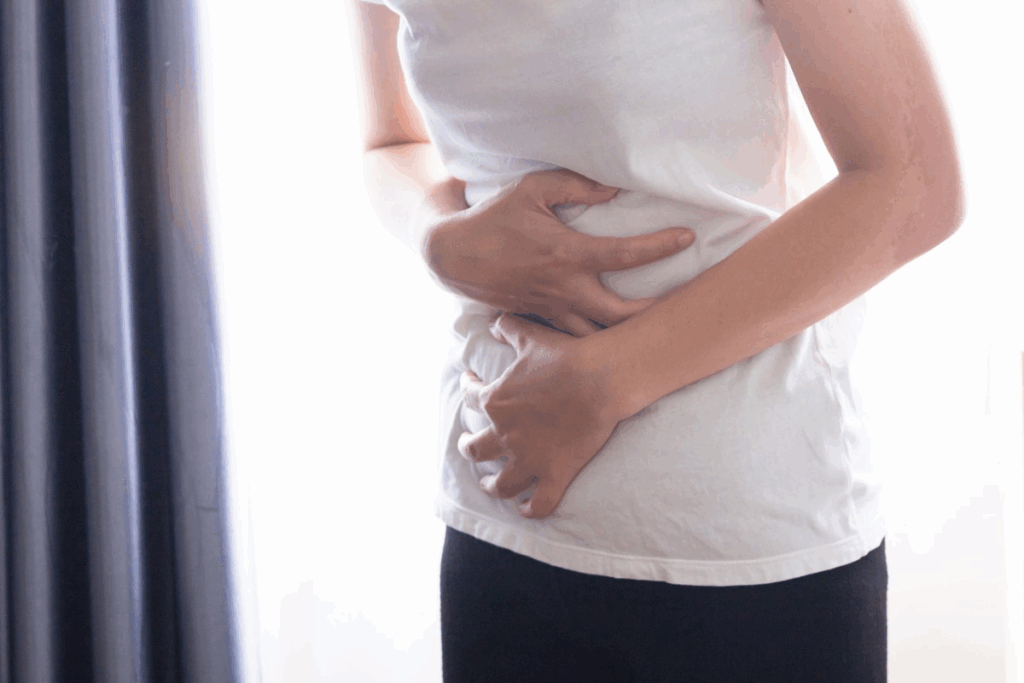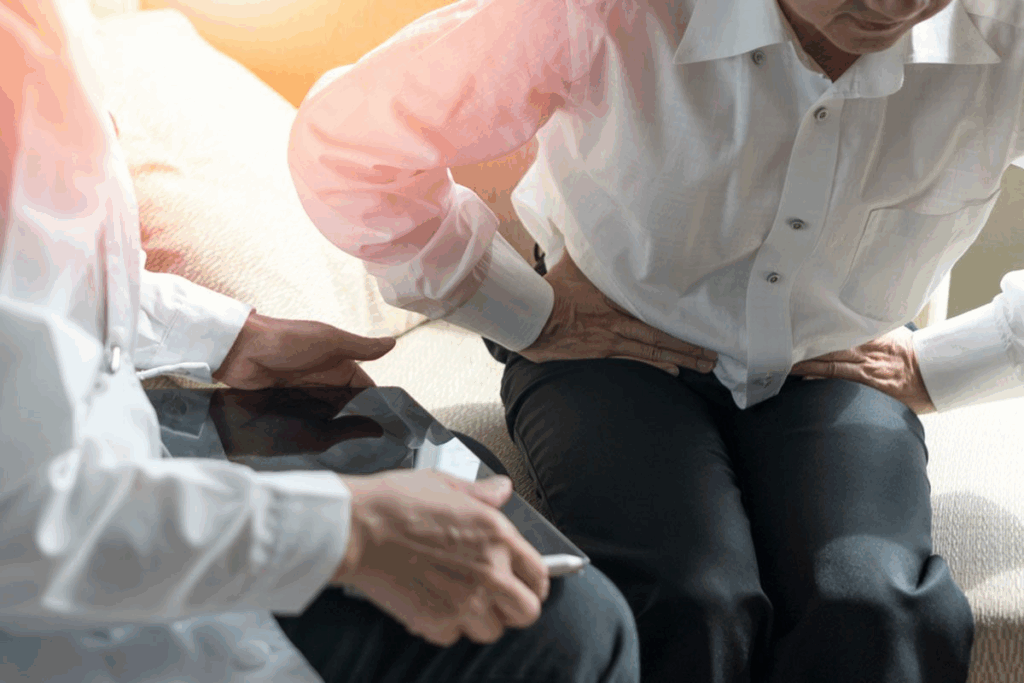Last Updated on October 30, 2025 by Bilal Hasdemir

The gallbladder is often seen as non-essential, but it’s crucial for digestion. It stores and concentrates bile, a liver-made fluid. This fluid helps digest fats and absorb fat-soluble vitamins.
When we eat, the gallbladder releases bile into the small intestine. This helps break down fats. Though losing the gallbladder isn’t fatal, it can cause digestive issues for some.
At Liv Hospital, our team offers reliable care and advice for gallbladder concerns. Knowing how the gallbladder works is key to making smart health choices.

The gallbladder is a small but vital organ. It sits under the liver and is key to our digestion. It stores bile, a liver-made fluid, to help break down fats.
The gallbladder looks like a pear and is greenish from the bile it holds. It’s about 3 to 4 inches long. Its wall has layers that help it store and concentrate bile.
Key Features of the Gallbladder:
The gallbladder is part of the biliary system, which also includes the liver and bile ducts. It stores bile from the liver and releases it into the small intestine. This helps with fat digestion.
Knowing where the gallbladder is and how it works is key. It’s vital for digestion because it stores and concentrates bile.
| Organ | Function | Relation to Gallbladder |
| Liver | Produces bile | Bile is stored in the gallbladder |
| Gallbladder | Stores and concentrates bile | – |
| Bile Ducts | Transports bile | Connects liver and gallbladder to the small intestine |
| Small Intestine | Aids in digestion and absorption | Receives bile from the gallbladder via bile ducts |
“The gallbladder is a significant organ that plays a critical role in digestion by storing and releasing bile for fat digestion.”
Understanding the gallbladder’s anatomy and its role in digestion is important. It helps us see why it’s so vital and what happens if it’s not working right.

The gallbladder is often overlooked but is key for digestion and nutrient absorption. It mainly helps break down fats during digestion.
Bile, made by the liver, is vital for fat breakdown and absorption. It turns fats into smaller pieces for enzymes to process. This is key for getting fat-soluble vitamins like A, D, E, and K.
Bile’s role in digestion is huge. Without enough, digesting fats becomes hard, leading to nutritional gaps.
The gallbladder holds bile between meals. It concentrates bile by removing water and salts. This makes bile more effective.
By storing and concentrating bile, the gallbladder prepares for fat digestion after meals.
After eating, the gallbladder releases bile into the small intestine. Hormonal signals, like cholecystokinin (CCK), trigger this release. CCK is sent by the duodenum when fats are present.
Releasing bile on time is key for fat digestion and nutrient absorption. It shows the gallbladder’s importance in digestion.
In short, the gallbladder is vital for digestion by managing bile. Knowing its role shows its importance for health and nutrition.
The gallbladder is key in our digestive system, mainly for breaking down fats. It stores and concentrates bile, a liver-made fluid. This fluid is vital for fat digestion and absorbing fat-soluble vitamins.
The gallbladder helps with fat digestion by releasing bile into the small intestine when we eat fatty foods. Bile salts turn fats into smaller pieces. This makes fats easier for enzymes to digest.
Importance of Bile in Fat Digestion:
The gallbladder’s role in bile storage and release is linked to fat-soluble vitamins absorption. These vitamins are important for vision, bone health, and blood clotting. Without enough bile, absorbing these vitamins is harder.
“The absorption of fat-soluble vitamins is closely tied to the availability of bile in the intestine. Adequate bile production and release are essential for maintaining optimal levels of these vitamins in the body.”
| Vitamin | Function | Consequence of Deficiency |
| Vitamin A | Important for vision, immune function | Night blindness, impaired immune function |
| Vitamin D | Crucial for bone health, calcium absorption | Rickets, osteomalacia |
| Vitamin E | Acts as an antioxidant, protecting cells | Neurological problems, impaired immune function |
| Vitamin K | Essential for blood clotting | Easy bruising, bleeding disorders |
The gallbladder helps ensure fats are digested well and fat-soluble vitamins are absorbed. Without it, digesting fatty foods can be tough. This might lead to nutritional deficiencies.
In conclusion, the gallbladder is vital for nutrition. It aids in fat digestion and vitamin absorption. Understanding its role highlights the digestive system’s complexity and the need for a healthy gallbladder.
Gallbladder issues are common and can include gallstones and inflammation. These problems often need medical help. The gallbladder is a small organ under the liver. It stores and concentrates bile for digestion.
Gallstones are small, hard deposits in the gallbladder. They form when bile has too much cholesterol or bilirubin. These stones can cause severe pain, known as biliary colic, and may lead to complications such as cholecystitis.
Symptoms of gallstones include:
Cholecystitis is inflammation of the gallbladder, often caused by gallstones blocking the cystic duct. This condition can be acute or chronic and may lead to serious complications if not treated promptly.
Risk factors for cholecystitis include:
Several factors increase the risk of developing gallbladder disease, including:
| Risk Factor | Description |
| Obesity | Being significantly overweight increases the risk of gallstones. |
| Diet | A diet high in fat and low in fiber can contribute to gallstone formation. |
| Age and Gender | Women and older adults are more likely to develop gallstones. |
Understanding these risk factors can help in preventing gallbladder problems. For instance, maintaining a healthy weight and eating a balanced diet can reduce the risk of gallstones.
The gallbladder is key for digestion but not for living. Many people live without it. It’s clear that you can live without a gallbladder, but how the body adjusts is important to know.
Without a gallbladder, the body changes how it handles bile. The gallbladder stores bile from the liver and releases it into the small intestine. Without it, bile goes straight from the liver to the small intestine.
This change can affect digestion, mainly after eating fatty foods. But, most people don’t face big problems long-term.
The liver makes bile, not the gallbladder. The liver keeps making bile even without the gallbladder. The main difference is how bile gets to the digestive system.
Without a gallbladder, bile flows into the small intestine all the time. This can cause digestive issues, but the body usually gets used to it.
Many studies have looked at living without a gallbladder. They found that while some people might have bowel changes or discomfort after eating fatty foods, most live healthy lives.
| Aspect | With Gallbladder | Without Gallbladder |
| Bile Storage | Bile is stored and concentrated | Bile flows directly into the small intestine |
| Digestion of Fats | Efficient digestion after meals | Continuous bile flow, possible digestive changes |
| Long-term Health | Normal digestive function | Generally normal, with some adjustments |
In summary, the gallbladder is important for digestion but not for survival. The body adjusts to its removal, and most people can live healthy lives without it.
Gallbladder removal, or cholecystectomy, is needed when the gallbladder is too sick or damaged. This surgery is often for people with chronic or severe gallbladder disease.
Several conditions may need gallbladder removal. These include:
The American College of Surgeons says cholecystectomy is a common surgery in the U.S. Surgery is chosen after other treatments fail to help symptoms.
Gallbladder surgery is quite common. In the U.S., hundreds of thousands of cholecystectomies are done each year. This shows how important it is to know about gallbladder disease and its surgery.
| Condition | Prevalence | Typical Treatment |
| Gallstones | Common, mostly in women and older adults | Cholecystectomy for recurrent or severe cases |
| Cholecystitis | Often linked with gallstones | Antibiotics and cholecystectomy |
| Gallbladder Polyps | Less common, sometimes linked with cancer risk | Monitoring or cholecystectomy based on size and characteristics |
Choosing to have gallbladder removal surgery is a big decision. It can help with symptoms and prevent future problems. But, it also has risks like infection, bleeding, and changes in digestion.
“The decision to perform a cholecystectomy should be based on a thorough evaluation of the patient’s condition and a careful consideration of the possible benefits and risks.” – American College of Surgeons
Whether or not to remove the gallbladder depends on many things. These include the person’s health, how bad their condition is, and what they prefer.
Can the gallbladder heal itself? We need to look at its healing powers and limits. The gallbladder is a delicate organ that can face problems like gallstones and inflammation.
The gallbladder can’t always heal itself, mainly with issues like gallstones or severe inflammation. Often, these problems need medical help to avoid more serious issues.
Gallstones are a big problem that natural healing can’t fix alone. They can cause inflammation and infections, making treatment necessary.
Even though the gallbladder can’t heal some problems, there are ways to manage symptoms. Changing your diet is often suggested for gallbladder issues.
Even with diet changes and medicine, sometimes surgery is needed. This is true for frequent gallstone attacks or serious inflammation.
| Condition | Typical Treatment |
| Gallstones with recurrent attacks | Surgical removal of the gallbladder (cholecystectomy) |
| Severe cholecystitis | Immediate medical attention, potentially including surgery |
| Chronic gallbladder disease | Management through diet and potentially surgery |
In summary, while diet changes and medicine can help, the gallbladder can’t heal itself from serious problems like gallstones or inflammation. Knowing when to seek medical help is key to managing these issues.
Gallbladder surgery is common, and knowing the surgical options is key. The choice of surgery affects recovery and outcome. It’s important to understand these differences.
Laparoscopic cholecystectomy is the most common surgery for gallbladder removal. It uses small incisions in the abdomen. This method offers less postoperative pain, lower risk of infection, and quicker recovery compared to open surgery.
The American College of Surgeons says laparoscopic cholecystectomy is the standard for gallbladder removal. It has many benefits and fewer risks.
Open cholecystectomy requires a larger incision in the abdomen. It’s more invasive and has a longer recovery. But, it’s needed for complicated cases or when laparoscopic surgery can’t be done.
“Open cholecystectomy may be required in cases where the gallbladder is severely inflamed or when there are complications that prevent laparoscopic surgery.”
Recovery times differ between laparoscopic and open cholecystectomy. Laparoscopic surgery usually means a quicker recovery, with most people back to normal in a week. Open cholecystectomy takes longer, often several weeks.
It’s important to know these differences to manage expectations and ensure a smooth recovery. Always follow your surgeon’s instructions and attend follow-up appointments.
Having your gallbladder removed starts a new chapter in your life. Your body must adjust to life without this organ. The gallbladder helps with digestion, but its loss means your body has to find new ways to work.
Right after surgery, you might feel pain, discomfort, and digestive changes. Diarrhea is common because bile flows differently into your intestine. This can upset your gut bacteria and how you absorb nutrients.
To ease these symptoms, doctors suggest a temporary dietary regimen. Eat smaller meals more often. Also, avoid foods that are fatty or greasy.
As time goes on, your body gets used to not having a gallbladder. The liver keeps making bile, which goes straight to your small intestine. This might cause some discomfort at first, but most people get used to it in a few months.
Some people might need to change their diet for good to stay healthy. Eating less fat and more fiber can help with digestion.
Though rare, some people face post-cholecystectomy syndrome, with ongoing digestive problems. Handling these issues often means changing your diet, taking medicine, or sometimes needing more medical help.
It’s key to stay in touch with your doctor to keep an eye on your health. With the right care, most people can live well without a gallbladder.
After gallbladder surgery, making dietary changes is key. The body needs time to adjust to life without a gallbladder. This means changing how we eat to better digest fats and nutrients.
Start with a diet that’s easy on your stomach. Eat smaller meals more often. This helps your digestive system work better.
Foods high in fiber, like fruits, veggies, and whole grains, are good. They keep your digestive system healthy.
Eat more lean proteins and healthy fats. Foods like avocados and nuts are great. They’re nutritious and help with post-surgery symptoms.
Some foods can make digestion harder after gallbladder removal. Stay away from fatty or greasy foods. Spicy and sugary foods can also cause trouble.
Limiting fat in your diet can help with diarrhea, a common problem. Keeping a food diary helps find out which foods upset your stomach.
Some people might need supplements after gallbladder surgery. Bile salts help with fat digestion. They make up for less bile in the body.
Omega-3 fatty acids and fat-soluble vitamins (A, D, E, K) are also good. But talk to a doctor before taking any supplements.
Good meal planning is important for digestion after gallbladder surgery. Plan meals that are balanced and easy to digest. Eating a variety of foods helps meet nutritional needs.
By making these dietary changes and watching what you eat, you can manage your digestion better after gallbladder surgery.
The gallbladder is important for digestion, but removing it is an option for those with chronic gallbladder disease. Most people do well after gallbladder surgery and adjust to life without it. They keep their digestive health in check.
Life without a gallbladder means making some diet changes. Knowing how the gallbladder works and what happens when it’s gone helps. This knowledge helps people adjust to their new life after surgery.
Keeping the digestive system healthy is key, whether you have a gallbladder or not. Eating well and living healthily helps avoid problems. This way, people can stay active and healthy, gallbladder or not.
No, you can live without a gallbladder. Your body can adjust to its absence. You might need to change your diet a bit.
The gallbladder stores and concentrates bile. This bile is key for digesting fats and absorbing fat-soluble vitamins.
Sometimes, treatments can manage gallbladder issues. But, the gallbladder can’t heal itself fully. In serious cases, you might need medical help.
Gallstones, cholecystitis, and other inflammation are common issues. These can cause pain, nausea, and vomiting.
Yes, removing the gallbladder is a common surgery. It’s often done for gallstones and other diseases.
After surgery, eat foods low in fat and high in fiber. Avoid fatty or greasy foods. You might also need supplements.
Yes, many people live well without a gallbladder. But, you might notice changes in digestion, like diarrhea or fatty stools.
The gallbladder helps digest fats and absorb fat-soluble vitamins. Losing it can affect how you use nutrients, but your body can adjust.
You can choose between laparoscopic and open cholecystectomy. Laparoscopic surgery is less invasive and leads to quicker recovery.
No, you don’t need a gallbladder to survive. While it’s important for digestion, your body can adapt without it.
Andrews, S., et al. (2013). Gallstone size e related to the incidence of post-cholecystectomy retained bile duct stones. Surgery Journal, 5(3), 143-147. Retrieved from https://www.sciencedirect.com/science/article/pii/S1743919113000484
Subscribe to our e-newsletter to stay informed about the latest innovations in the world of health and exclusive offers!
WhatsApp us